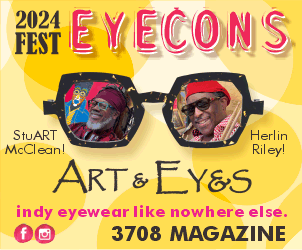 |
And to think—just 10 years ago there were hardly any Kidd Jordan CDs available. Now, since Jordan has been embraced by the New York, Chicago, and international free jazz communities, there’s a great deal more of his music available and recordings like this one show the range and breadth of his art. For starters, his collaborator here is Kali Fasteau, an altogether different musician from his usual cohorts Alvin Fielder, William Parker, and Fred Anderson. Fasteau’s involvement with free improvisation extends back to the early days of the movement and her close partnership with multi-instrumentalist Donald Rafael Garrett (most well-known for playing on Coltrane’s Kulu Se Mama, OM, and Live in Seattle). Their duo, the Sea Ensemble, did a seminal recording for ESP-disk, documenting them as among the first free jazz players (along with Don Cherry) to embrace the influence of Asian and African global musics into their aesthetic. In the decades since, she’s continued to hone this approach, traveling the planet and adding a score of instruments to her arsenal while maintaining a singular voice of her own, particularly on soprano saxophone.
For Live at Kerava, a festival date in Finland, Fasteau structures the set in nine movements, each featuring her playing a different instrument. Beginning on mizmar (an Arabic double-reed horn), she moves to piano, Nai flute (with copious echo), cello, synthesizer, voice with electronics, violin, drum set, and closes out on soprano sax. It’s a largely successful approach as it provides sonic variety while also inspiring Fasteau, Jordan, and drummer Newman Taylor Baker to approach the music from a different angle in each piece. Fasteau’s cello and violin (with wild echo effects like those on Sun Ra’s Cosmic Tones for Mental Therapy) are especially strong, and on piano she provides the kind of immersive, celestial playing that post-Coltrane tenorists like Jordan just love. The synthesizer piece “Sibelius Suite” is the least effective, largely due to the digital harp sounds (the fat tones of analog synths suit improv a lot better), but even there Kidd finds something to play with, and quite lyrically at that. There’s a lively section of inner-piano scraping and altissimo-range Jordan on “Trancendance” that spurs Jordan into some spiraling, cascading lines and powerful, speech-like cries. It’s the kind of thing that Jordan does best and a testament to Fasteau’s generous listening and playing skills. She really does seek to spur her collaborators into directions where they’ll sound great, but the payoff of this approach is that it reveals Fasteau as a strong equal partner in the process and everybody wins.
All profits from the sale of this recording will be donated to the Louis Armstrong School of Jazz under the direction of Professor Edward “Kidd” Jordan.




